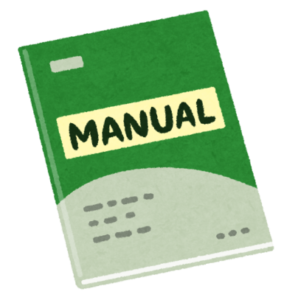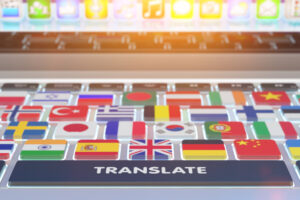Note: This blog post was originally written in Japanese for our Japanese website. We used our machine translation platform Translation Designer to translate it and post-edit the content in English. The original Japanese post can be found here.
In response to the popularity of our blog series Machine Translation Vs. Human Translation, we have another extra edition. For this post, we'd like to highlight on how to use machine translation for manual translation. This will be part 1. Check it out if you want to use machine translation for manual translation, and/or if you want to know the advantages and disadvantages of using machine translation. Now let's get started!

Can machine translation be used for manuals?
The material you need when selling your product is a manual. When it comes to manuals, there are many different types.
For example, there are user manuals for users to operate the product, administrator guides for administrators, and service manuals for technicians. If manuals are to be distributed in other languages in line with the overseas sales of products and services, you obviously need translations for the number of languages you sell in.
Even creating a manual requires a considerable amount of labor, now you have to deal with each language version. We all know that it takes a huge amount of money and time. Can we alleviate this problem by utilizing machine translation for creating multilingual versions?
In conclusion, the accuracy of machine translation has improved dramatically in recent years, and utilizing machine translation for manuals is worth considering. Let's go into the details at whether machine translation can really be used.
We'll be looking at its advantages and disadvantages, comparison with human translation, and methods to utilize machine translation.

What are the advantages and disadvantages of using machine translation?
As you know, the improvement in accuracy of machine translation is remarkable, and it is now being introduced and actively used by many companies. Compared to a decade ago, translation results are so fluent that some people may think that machine translation alone is enough.
First, let's organize the advantages and disadvantages of using machine translation. Compared to human translation, machine translation generally has the following advantages and disadvantages.
Advantages
| ・Cost is reduced ・Translation is faster |
Disadvantages
| ・Quality deteriorates |
It depends on how much volume you have to translate, but in general, machine translation can complete the translation in a very short period of time, ranging from seconds to tens of minutes. In addition, many machine translation services do not set a limit on the number of characters that can be processed. In that case, it is possible to translate large volumes at low cost.
As mentioned above, it is true that machine translation is advantageous in terms of cost and delivery time. However, even though accuracy has improved greatly, there are still concerns about quality. Therefore, when considering the use of machine translation for creating manuals in other languages, it is necessary to understand its characteristics and know what kind of manuals are suitable for machine translation.

What manuals are suitable for machine translation?
As we already mentioned, the disadvantage of machine translation is that it is inferior in terms of quality. Conversely, if you have a type of manual that can tolerate this disadvantage, it is suitable for machine translation. Then, what kind of manual can be said to be suitable for machine translation?
Let's see some examples below.
| ・Training manuals (for internal use) ・Service manuals (for engineers) |
Training manuals are used for training purposes and are usually intended for internal use. So, even if the quality of the translation is not very good, there should be no problem as long as the content is conveyed. Also, manuals for engineers, such as service manuals, do not require high-quality translations as long as the engineers can understand the content.
In other words, manuals that are not read by your customers are suitable for machine translation. To avoid misunderstandings, this does not mean that the raw output of machine translation can be used as is. This is an evaluation based on the premise that some human correction (post-editing) will be incorporated. Please take this into consideration. Although the accuracy of machine translation has improved dramatically, errors are inevitable in machine translation. It is expected that this point will not be resolved for some time.
Then, are manuals that are intended for your customers not suitable for machine translation? Not at all. As discussed in our previous post Machine Translation Vs. Human Translation Extra Edition 2, by combining translation memory (TM), machine translation (MT), and post-editing (PE), it is possible to use machine translation to appropriately translate manuals that are intended for customers as readers.

Summary
After reading this far, hopefully, some of you may think that machine translation can also be used for manual translation. Depending on the purpose of the manual and the intended reader, machine translation can also be very effective in this area. In addition, manuals that are considered unsuitable for machine translation can be utilized by taking steps to compensate for their disadvantages.
Kawamura's translation services
Kawamura International offers various solutions to effectively use machine translation engines. In addition, we developed a platform so that our customers can easily generate a customized engine and make effective use of their language assets.
If you're looking for solutions using machine translation or post-editing work, we would be happy to support you.
Feel free to reach out to us.
_CMYK_OL.png)

